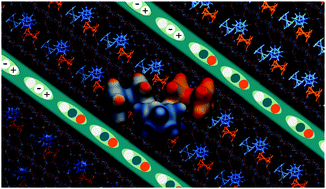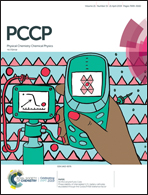Molecular QCA embedding in microporous materials
Abstract
We propose an environment for information encoding and transmission via a nanoconfined molecular Quantum Dot Cellular Automata (QCA) wire, composed of a single row of head-to-tail interacting 2-dots molecular switches. While most of the research in the field refers to dots-bearing molecules bound on some type of surface, forming a bidimensional array of square cells capable of performing QCA typical functions, we propose here to embed the information bearing elements within the channels of a microporous matrix. In this way molecules would self-assemble in a row as a consequence of adsorption inside the pores of the material, forming an encased wire, with the crystalline environment giving stability and protection to the structure. DFT calculations on a diferrocenyl carborane, previously proposed and synthesized [J. A. Christie, R. P. Forrest, S. A. Corcelli, N. A. Wasio, R. C. Quardokus, R. Brown, S. A. Kandel, Y. Lu, C. S. Lent and K. W. Henderson, Angew. Chem., Int. Ed., 2015, 54, 15448], were performed both in vacuum and inside the channels of zeolite ITQ-51, indicating that information encoding and transmission is possible within the nanoconfined environment.



 Please wait while we load your content...
Please wait while we load your content...